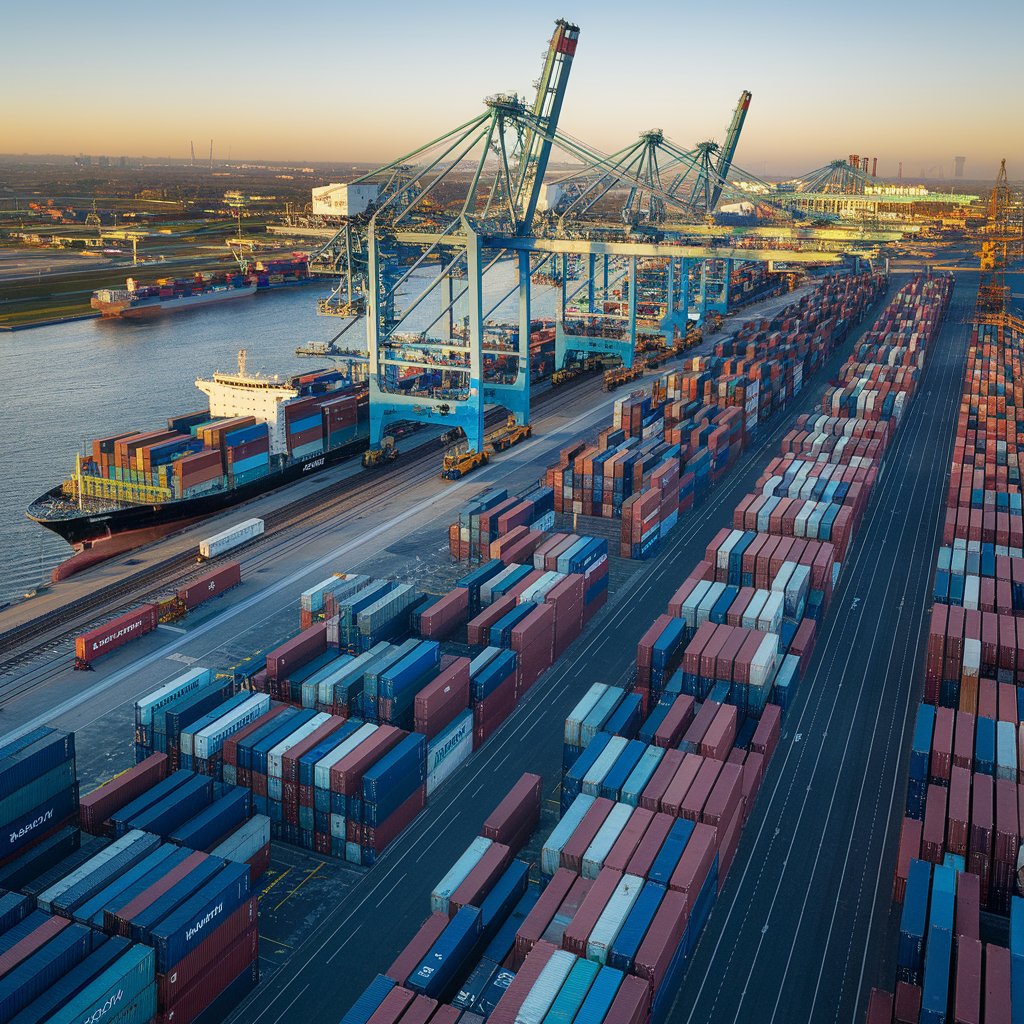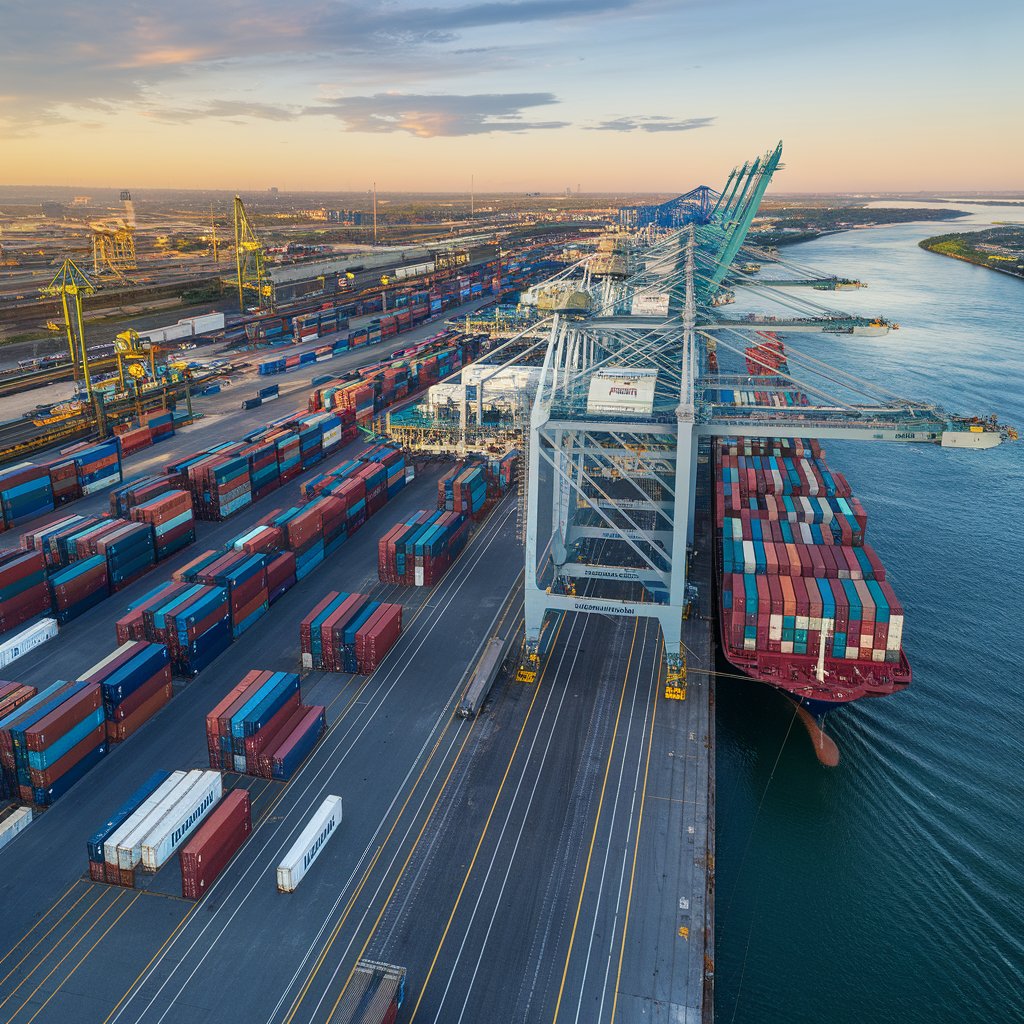A Beginner's Guide to Barbours Cut

What Is Barbours Cut?
Barbours Cut Container Terminal (BCT) is a primary shipping terminal located within the Port of Houston, Texas. It plays a significant role in U.S. trade and logistics, serving as a major entry and exit point for containerized goods.
Key Facts About Barbours Cut Terminal
- Location: Morgan’s Point, Texas, along the Houston Ship Channel.
- Operated by: Port Houston (the authority that manages the terminal).
- Function: Handles containerized cargo for domestic and international trade.
- Strategic Importance: One of the busiest container terminals in the U.S. Gulf Coast.
Key Features of Barbours Cut Terminal
- Advanced Cargo Handling Capabilities
- Equipped with high-tech cranes, including ship-to-shore and rubber-tired gantry cranes.
- Can efficiently load and unload large container ships.
- Expansive Terminal Area
- Covers more than 300 acres of land.
- Features multiple berths for docking vessels.
- Deep-Water Access
- The Houston Ship Channel allows for the passage of large cargo vessels.
- Ongoing dredging projects improve accessibility for larger Panamax and Post-Panamax ships.
- Efficient Intermodal Connectivity
- Offers seamless connections to rail and trucking networks.
- Key distribution points across the U.S. can be accessed from the terminal.
- Technology-Driven Operations
- Utilizes automated tracking systems for container management.
- Enhances security with real-time monitoring and digital entry systems.

Practical Uses of Barbours Cut Terminal
1. International Trade & Shipping
- Importers and exporters use Barbours Cut to transport goods between the U.S. and international markets.
- The terminal facilitates trade with major global shipping routes.
2. Supply Chain & Logistics Operations
- Companies use the terminal as a hub for distribution and warehousing.
- Streamlined operations allow for faster cargo transfers and reduced transit times.
3. Container Storage & Transshipment
- The facility includes container yards for temporary storage.
- Businesses can consolidate shipments before final delivery.
4. Industrial & Manufacturing Support
- Texas-based manufacturers rely on Barbours Cut for raw material imports and product exports.
- The terminal supports industries such as energy, chemicals, and retail.

Advantages and Disadvantages of Barbours Cut
Advantages | Disadvantages |
High cargo capacity – Can process large volumes of containerized goods. | Congestion issues – High traffic can sometimes cause delays. |
Strategic location – Positioned along major shipping routes. | Weather-related disruptions – Hurricanes and storms may impact operations. |
Advanced equipment and automation – Improves loading and unloading efficiency. | Limited public accessibility – Access is restricted to authorized personnel. |
Strong intermodal connections – Easy transition to rail and trucking networks. | Regulatory compliance required – Businesses must follow port security and trade laws. |
Barbours Cut vs. Other U.S. Container Terminals
Terminal | Location | Key Feature |
Barbours Cut Terminal | Houston, Texas | Major Gulf Coast container terminal with strong rail connectivity. |
Port of Los Angeles | Los Angeles, CA | Largest container port in the U.S., handling massive cargo volumes. |
Port of New York/New Jersey | New York, NY | Key East Coast terminal for international trade. |
Port of Savannah | Savannah, GA | Fast-growing port with extensive distribution networks. |

When to Use Barbours Cut Terminal?
- Ideal for businesses importing/exporting goods through the Gulf of Mexico.
- Best for companies needing intermodal logistics solutions (rail, trucking, and warehousing).
- Recommended for supply chains requiring access to major U.S. distribution centers.
- Not suitable for non-containerized cargo or bulk shipments (other terminals may be better suited).
Conclusion
Barbours Cut Terminal is a vital logistics hub in the U.S., playing a key role in containerized trade, intermodal transport, and global supply chains. With its advanced technology, strategic location, and high cargo capacity, it is an essential terminal for businesses looking to optimize shipping and logistics operations.
Understanding the capabilities and advantages of Barbours Cut can help companies maximize efficiency, reduce shipping costs, and enhance trade connections. Whether you’re a freight forwarder, importer, exporter, or logistics manager, knowing how to leverage this terminal can be a game-changer for your supply chain strategy.
